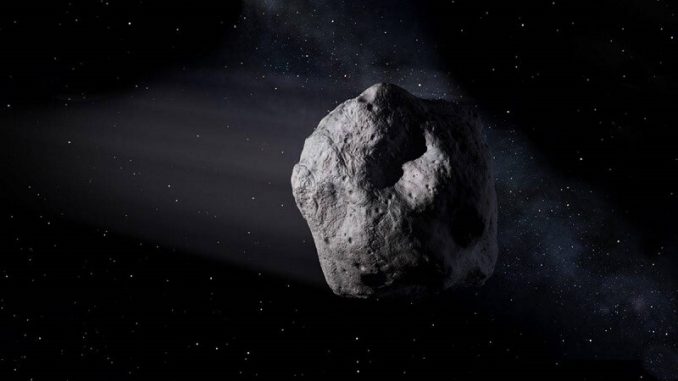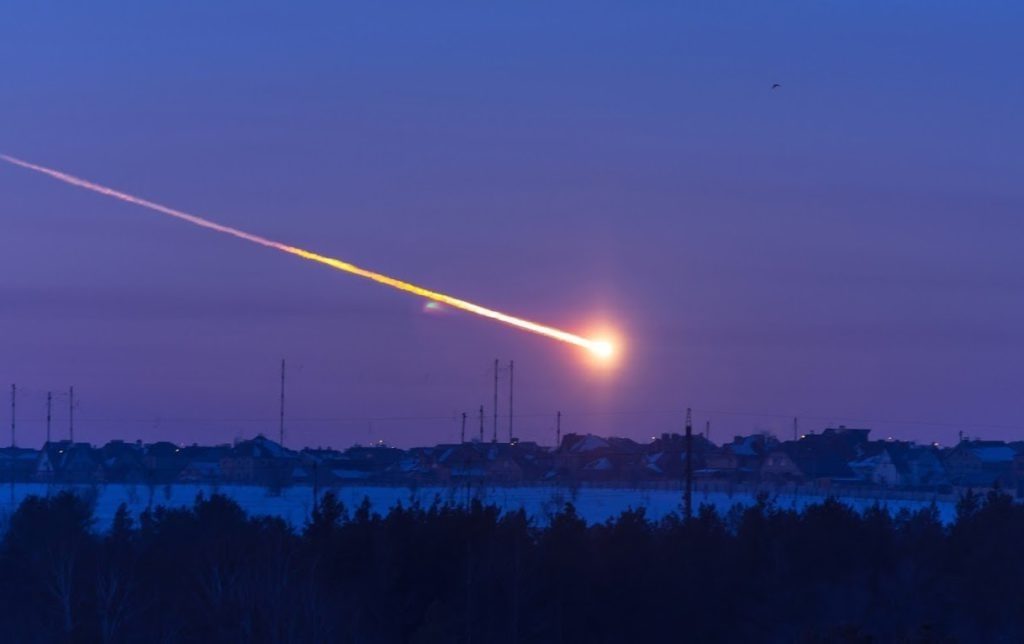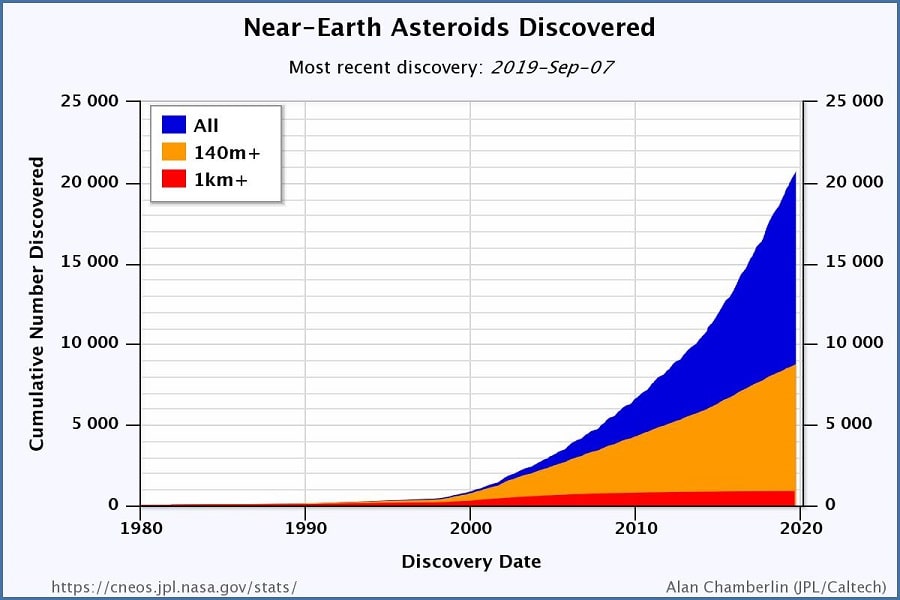
On Saturday 14 September, 2019 a large asteroid (designated asteroid 467317 2000 QW7) will pass the Earth at a safe distance of 3.5 million miles or 14 lunar distances at a speed of 23,100km/h per hour .
The asteroid is thought to be approx 290 meters in width and 650 meters in height. The massive space rock has an orbital period of just over 19 years. The next pass in 2038 will be a little closer to the Earth but still poses no threat. NASA has been tracking this object for many years and predicts no threat to our planet anytime this century.
Asteroids of this size are easier to detect compared to their smaller cousins as they reflect more sunlight. As a result, a much higher percentage of these rocks and their orbits are ‘known’ by space agencies.
The mid-size and smaller asteroids however are a little more worrisome. Many of these asteroids that fall in the bracket of tens to hundreds of meters in diameter are thought to be unknown and can pass close to the Earth undetected (some have been detected after their closest approach). Because of their smaller size and exceptionally dark, non-reflective surfaces, they are desperately difficult for astronomers to detect early. NASA recognises that:
While no known asteroid larger than 140 meters in size has a significant chance to hit Earth for the next 100 years, less than half of the estimated 25,000 NEOs that are 140 meters and larger in size have been found to date.
NASA NEO Program Webpage
Although smaller asteroids are not continent or planet killers, the one’s large enough to survive re-entry can still really pack-a-punch and do some serious damage if they reach the ground near a populated area.

The Russian meteor that exploded 97,000 feet above the skies of Chelyabinsk in February 2013 was not large enough or tough enough to reach the ground. However, the air blast was still many times more powerful than the atomic bomb dropped over Hiroshima in 1945. The Chelyabinsk explosion was able to damage buildings and cause injury despite the event’s very high altitude.
The efficiency of detection
Asteroid detection systems are improving all the time. According to NASA’s Planetary Defence Coordination Office (PDCO), as of April 2019, the number of discovered near-Earth asteroids totaled more than 20,000. An average of 30 new discoveries are added each week. 95% of these were discovered by NASA-funded surveys. The chart below from NASA’s Jet Propulsion Lab shows how many of these discoveries have been made in the past two to three decades indicating just how quickly detection systems have improved.

Until now, Earth has evaded any real significant event that has caused exceptional damage or loss of life. With detection systems improving all of the time and more research being made on how to deal with an impending impact, the future is not as bleak as people might think.
